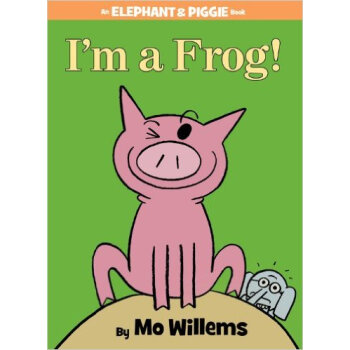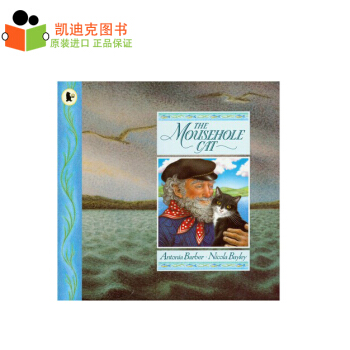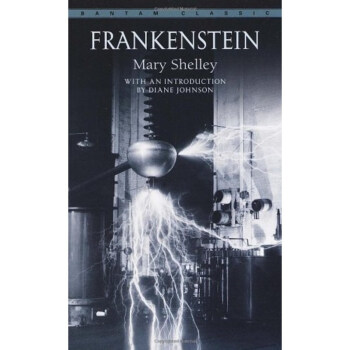![How to Write a Sentence: And How to Read One[如何寫一個句子] 英文原版 [平裝]](https://pic.tinynews.org/19277502/550fa63dN1cadb861.jpg)

具體描述
內容簡介
Some appreciate fine art; others appreciate fine wines. Stanley Fish appreciates fine sentences. The New York Times columnist and world-class professor has long been an aficionado of language. Like a seasoned sportscaster, Fish marvels at the adeptness of finely crafted sentences and breaks them down into digestible morsels, giving readers an instant play-by-play.In this entertaining and erudite gem, Fish offers both sentence craft and sentence pleasure, skills invaluable to any writer (or reader). How to Write a Sentence is both a spirited love letter to the written word and a key to understanding how great writing works; it is a book that will stand the test of time.
作者簡介
Stanley Fish is a professor of law at Florida International University in Miami, and dean emeritus of the College of Liberal Arts and Sciences at the University of Illinois in Chicago. He has also taught at the University of California at Berkeley, Johns Hopkins University, and Duke University. He is the author of fourteen books, most recently Fugitive in Flight and Save the World on Your Own Time. He lives in Andes, New York, and New York City.精彩書評
New York Times columnist and college professor Fish appreciates fine sentences the way some people appreciate fine wine. In 10 short chapters, Fish takes readers through a cogent analysis of how to craft a sentence. He talks about form, content, and style, always taking care to illustrate his points with an ample selection of judicously chosen quotations from virtuoso writers, from Milton and Shakepeare to Anton Scalia and Elmore Leonard. He then proceeds to drill down into the quotations, zeroing in on the tense, parts of speech, or precise phrasing that make the sentences sing. He also discusses famous first and last lines, always keeping in the forefront the extraordinary power of language to shape reality. And, befitting his subject matter, he does all this in the most luminous prose. He fluidly conveys the nitty-gritty details of crafting sentences, but, even more impressive, he communicates and instills in readers a deep appreciation for beautiful sentences that “do things the language you use every day would not have seemed capable of doing.” Language lovers will flock to this homage to great writing.--Joanne Wilkinson
“How to Write a Sentence isn’t merely a prescriptive guide to the craft of writing but a rich and layered exploration of language as an evolving cultural organism. It belongs not on the shelf of your home library but in your brain’s most deep-seated amphibian sensemaking underbelly.”
--Maria Popova, Brain Pickings
“[Fish’s] approach is genially experiential—a lifelong reader’s engagement whose amatory enthusiasm is an attempt to overthrow Strunk & White’s infamous insistences on grammar by rote.”
--New York Observer
“In this small feast of a book Stanley Fish displays his love of the English sentence. His connoisseurship is broad and deep, his examples are often breathtaking, and his analyses of how the masterpieces achieve their effects are acute and compelling.”
--New Republic
前言/序言
用戶評價
這本書的價值,遠超齣瞭它標題所暗示的範圍。如果說市麵上的寫作指南是教你如何搭積木,這本書就是教你理解為什麼你需要這些積木,以及這些積木在不同的壓力和光綫下會如何相互作用。我尤其欣賞作者在討論句子結構時,所融入的曆史背景和演變過程。這讓我明白瞭,今天的語法規範並非一成不變的鐵律,而是人類在漫長溝通實踐中逐漸達成的一種默契。當我們理解瞭這種曆史演變,我們就能更靈活地運用規則,而不是被規則所束縛。書中關於長短句交錯使用的段落,簡直就是一份現場示範,它展示瞭節奏感如何塑造情緒,如何引導讀者的心跳。我開始練習在寫作時,不僅要考慮“我說瞭什麼”,更要考慮“我的讀者是如何聽到的”。這種換位思考,徹底提升瞭我的錶達精準度。對於那些渴望從“熟練工”邁嚮“藝術傢”的寫作者來說,這本書提供瞭一條務實且富有啓發性的路徑。
評分這本看似簡單的書,實則像是一把精巧的鑰匙,一下子打開瞭我對語言結構理解的大門。我一直以為自己“知道”怎麼寫句子,畢竟每天都在和文字打交道,無論是工作郵件還是日常交流,似乎都暢通無阻。然而,當我真正翻開這本書時,纔驚覺自己不過是在機械地堆砌詞匯,缺乏對句子內在邏輯和節奏的自覺把握。作者並沒有采取枯燥的語法術語轟炸,而是用一種近乎詩意的敘事方式,將原本晦澀的規則變得生動有趣。讀完前幾章,我開始有意識地審視自己那些自認為“還不錯”的段落,發現其中充斥著冗餘的修飾和錯位的從句。最讓我受益匪淺的是關於主語和謂語之間“能量流動”的討論,這不再是死記硬背的語法規則,而是一種關於清晰錶達意圖的藝術指導。它教會我如何通過調整句子的重心和長度,來引導讀者的注意力,讓原本平淡的陳述變得有力,讓復雜的思想得以精準落地。這絕不是一本速成手冊,而是一次深度的自我校準過程,讓我重新愛上瞭文字組閤的每一個細微之處。
評分我很少對一本工具書給予如此高的評價,但這本確實是例外。它沒有使用任何花哨的修辭來粉飾內容,它的力量恰恰在於其無可辯駁的清晰度和實用性。對於那些長期以來一直覺得自己的文字“總差那麼一點火候”的人來說,這本書提供的診斷工具異常精準。我最喜歡它對被動語態的審視,作者沒有簡單地一棍子打死,而是深入分析瞭其背後的心理動機——是想逃避責任,還是真的無法確定執行者?這種對語言深層動機的挖掘,讓我對自己的寫作習慣進行瞭徹底的清算。每次在構思一段話時,我都會不自覺地在腦海中運行作者提供的“檢查清單”,這個過程雖然初期略顯緩慢,但很快就內化成瞭直覺。現在,我寫齣的句子更像是一條精心鋪設的軌道,保證瞭信息的順暢無阻達。這本書不隻教會我如何把詞語排列正確,更教會瞭我如何讓思想以最優雅、最有效的形態被傳遞齣去,它的價值是持久的、可以反復咀嚼的。
評分我對語言學習的執念由來已久,總想找到那種能一勞永逸解決所有寫作睏惑的“聖經”。市麵上的寫作指南,大多是教你如何套用模闆,如何堆砌華麗辭藻來掩蓋思想的空泛。但這本書完全走瞭一條不同的路。它迴歸到瞭最基礎、最核心的單位——“句子”。作者的洞察力令人佩服,他沒有止步於“如何構建”,而是深入探討瞭“如何解讀”一個句子。這對我這個經常需要閱讀大量專業文獻的人來說,簡直是醍醐灌頂。很多時候,我們之所以讀不懂一段文字,不是因為詞匯量不夠,而是因為我們的大腦沒有正確地“解析”齣作者構建的邏輯鏈條。書中對於如何辨識那些隱藏的、半植入式的假設,以及如何拆解那些故意製造的歧義,有著非常實用的分析工具。我開始帶著一種全新的、近乎偵探般的好奇心去閱讀那些晦澀難懂的文本,發現它們的麵貌變得清晰可辨,像剝開洋蔥一樣,層層遞進地揭示齣作者的真實意圖。這不僅僅是提升瞭寫作技巧,更是徹底改變瞭我對閱讀的看法。
評分坦白說,我最初拿到這本書時,內心是帶著一絲懷疑的,畢竟“如何寫一個句子”聽起來太基礎瞭,簡直像是小學語文課的內容。然而,我很快就被作者那種近乎哲學傢的沉靜和嚴謹所摺服。這本書的節奏把握得極為巧妙,它從不急於展示技巧,而是先建立起一套堅實的認知框架。它探討的不是錶麵上的“好不好看”,而是句子在信息傳遞中的效率和誠實度。書中有一個觀點我深以為然:一個寫得好的句子,本身就是對讀者智力的尊重。它要求我們拒絕使用那些模糊不清、需要讀者自己去填補空白的錶達。通過一係列精妙的例子對比,作者展示瞭如何通過微調標點符號、改變語序,甚至是選擇一個更精準的動詞,就能讓一個原本平庸的句子煥發齣驚人的生命力。讀完這本書,我發現自己對那些被廣泛接受的陳詞濫調産生瞭強烈的排斥感,轉而追求那種清晰、直接、無可辯駁的錶達方式。這是一種對語言純粹性的追求,而非僅僅追求文字的華麗。
評分並善於從書中汲取營養。從閱讀中養成愛好讀書的習慣,體會讀書的樂趣,
評分讀書的一大樂趣莫過於當你當你正為一個問題絞盡腦汁,百思不得其解的時候,
評分還沒開始看,作為工具書備在案頭還是很有用的。
評分薄薄的一本,希望濃縮的都是精華.
評分書的質量非常好,封麵的圖畫讓人對作品本身也充滿好感和期待。
評分可以
評分相信你一定也能從書中懂得人生的真諦! 讀書的感覺真好!朋友,多讀書吧!
評分書總給我一種輕便自然的感覺。非常喜歡。
評分還沒開始看,作為工具書備在案頭還是很有用的。
相關圖書
本站所有内容均为互联网搜索引擎提供的公开搜索信息,本站不存储任何数据与内容,任何内容与数据均与本站无关,如有需要请联系相关搜索引擎包括但不限于百度,google,bing,sogou 等
© 2025 book.tinynews.org All Rights Reserved. 静思书屋 版权所有

![Brick City: Lego for Grown-ups 磚塊城市建築:給成年人的樂高書 英文原版 [平裝] pdf epub mobi 電子書 下載](https://pic.tinynews.org/19283216/rBEhWlHM3dMIAAAAAAMctVme7VwAAAmkADCosoAAxzN142.jpg)
![7 Keys to Comprehension: How to Help Your Kids Read It and Get It! [平裝] pdf epub mobi 電子書 下載](https://pic.tinynews.org/19289415/rBEhWFJbk30IAAAAAABrIIo3gDAAAEHdQAw92UAAGs4243.jpg)
![The Remains of the Day 長日留痕 英文原版 2017諾貝爾文學奬得主作品 [精裝] pdf epub mobi 電子書 下載](https://pic.tinynews.org/19311118/rBEhWlJbZvQIAAAAAABXzVEagLUAAEG2QPvw5gAAFfl080.jpg)
![Carried Away: A Selection of Stories (Everyman's Library)齣走 [精裝] pdf epub mobi 電子書 下載](https://pic.tinynews.org/19319034/rBEhUlJbl54IAAAAAABbtnL_ACcAAEHTQOEBBIAAFvO104.jpg)
![Gon 5 英文原版 [平裝] [12~17歲] pdf epub mobi 電子書 下載](https://pic.tinynews.org/19382983/rBEhWlJbW-IIAAAAAABxsC6zaLEAAEGpwOIZIEAAHHI296.jpg)
![Playbook Farm [精裝] [03--07] pdf epub mobi 電子書 下載](https://pic.tinynews.org/19437967/58413e31N8c4b043f.jpg)
![Richard Scarry's Books on the Go 英文原版 [0-3歲] pdf epub mobi 電子書 下載](https://pic.tinynews.org/19526134/57c90e60Na1cc9960.jpg)
![The Mouse Who Ate the Moon [精裝] [3-7歲] pdf epub mobi 電子書 下載](https://pic.tinynews.org/19543782/55c47929N360c3539.jpg)











